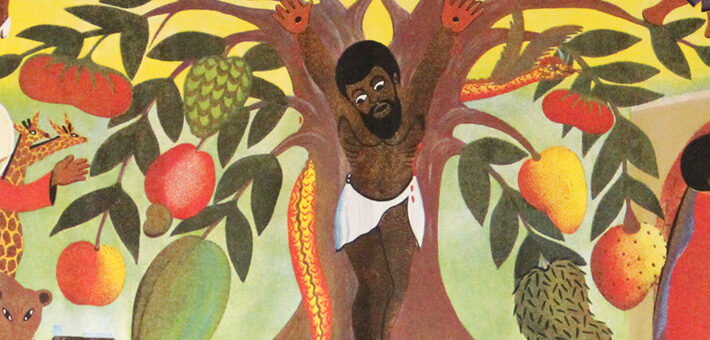Commentary on Colossians 1:11-20
This pericope easily breaks into two sections.
Each is loaded with key ideas and images, many of which could be treated individually as its own sermon. The challenge for any preacher lies in discerning what to select out of the abundant richness of this text. It would be easy to try to cover too much for one sermon. (This passage might make an excellent basis for a retreat, with a closing sermon tying the main threads together.)
The first section — Colossians 1:11-14 — could serve as a theological vocabulary test, laying out a myriad of ways we grow and are transformed in Christ. A sermon series could focus on key words and ideas: First on strength, power, and glory; then on endurance and patience; then on joy and thanksgiving; on being rescued from the grip of temptations and habits that lead us astray; on living now in a realm of new inclinations and possibilities; on the difference it makes to be redeemed and forgiven. That might at least give key topics a helpfully longer exploration. At the same time, however, breaking each of those out into an extended series would also dilute their cumulative impact. Taken together as one group at one time would allow a description of interrelated facets of the same transformation, how they might combine in each of us to bring new life.
The second section — Colossians 1:15-20 — offers its own Christological images test, laying out a myriad of ways to describe and understand Christ. One could, again, create a sermon series: First on what it means to say that Christ is the [visible] image of the invisible God; second, the depiction of Christ as creator, redeemer, and sustainer (no modalism in this passage); then on how Christ offers a direct channel to the most ancient, timeless, eternal things of God; on how Christ serves as the head of the church; on how Christ embodied God; and on how Christ is savior of us all and of all creation. Again, however, this might tend toward treating these as doctrinal starting points rather than as images that point to the deepest realities of God available to us in our own lives. (Exploring doctrinal systems and their internal coherence is certainly not a bad thing to do, as long as the focus remains on connecting with the transforming power of life in Christ, rather than focusing on defending a particular doctrinal system.) Further, if these images of Christ are treated separately from the first section, that breaks this pericope’s inherent connection between one’s daily living and God’s enduring purposes for all creation.
Turning to smaller units of words, ideas, or images, the following offers specific considerations and connections that lie in the sequence and “flow” of the passage:
- Colossians 1:11-14 mention “all strength” and “endur[ing] everything with patience” (verse 11, New Revised Standard Version). Translators of this passage have the difficult task of breaking up long, choppy, multipart Greek sentences (which Greeks loved) into shorter, more graceful sentences (which English-speakers generally prefer).
This masks a more complex forcefulness of the original language. All three characteristics are mentioned here with the dual sense of “complete, total” strength, endurance, and patience and “every kind” of strength, endurance, and patience. It’s not just “lots” of each of them, but every possible variety of each of them for every possible circumstance.
Out of Christ’s glorious power flow deep reservoirs of physical endurance, mental toughness, psychological health, and spiritual depth for us to draw on as we face the powers that oppose the will and ways of God (verse 14).
These reservoirs flow out of the redemption and forgiveness that follow from Christ’s work on our behalf. Here, redemption and forgiveness translate Greek words that refer to “release.” Forgiveness here means not just eternal life but new ways of life. New power comes from being released from the powers, motives, reasonings, or habits that have led us astray and still resist releasing us. Being “rescued … and transferred” into the realm of Christ and sharing the “inheritance of the saints in light” means that we are not only expected and called to live in Christ but enabled and empowered to do so (verses 12-4). Even if imperfectly, redemption, and release do not merely offer us a new self-image and new intentions, they empower, in Christ, new actions.
- Colossians 1:15-20, as noted before, offer more images of Christ than any one sermon could bear. However, one might gather their core similarities into two groups.
In the first grouping, Christ is described as the “image” (or in the Greek, “icon”) of God and as the “fullness” of God.
In the first case, “icon” refers to something that exhibits the same form, appearance, pattern as something else. In the Gospel of John, Jesus’s statement, “whoever has seen me has seen the Father”, (John 14:9) says essentially the same thing.
In the second case, “fullness” refers to fullness in the sense of completeness, totality, as in “everything God is or does was present in Christ.” Again, from John, this is the virtual equivalent of saying “he was with God and was God” (John 1:2) or “whatever the Father does, the Son does” (John 5:19).
Both cases point to the same reality — Christ as image and fullness of God exists as a direct channel to all that God is and does, enabling our heart, soul, strength, and mind to be grounded in the powerful redemption and release continually poured out into us and into all of creation.
In the second, related grouping, the idea of fullness, completeness, and totality lies in the repetition of the “all-ness” of Christ in relation to the whole creation. Christ is firstborn of “all” creation (Colossians 1:15). “All things” (stated twice) were created in, through, and for Christ (verse 16). Christ is before “all things” and holds “all things” together (verse 17). In Christ, not only the fullness of God, but “all” the fullness of God was pleased to dwell (verse 19). In Christ, “all” things were reconciled (verse 20).
- Pulling both sections together: In Christ we find all kinds of strength, endurance, patience, joy, and thanksgiving in release from old life and growth in new life. All these things flow out of all the ways that Christ connects all of us and all of creation to the power, life, faith, hope, and love (see also Colossians 1:3-8) that constitute life’s richest possibilities and the deepest realities of God and God’s creation.


November 20, 2016